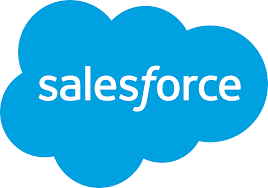How Retailers Can Take Advantage Of An Attribution Model With The Latest Techology
Which key points should be considered when choosing an attribution model?
Attribution is considered a top priority for Retailers. However, we see a lot of them still using a last click attribution model. It is self-evident that a model that only gives credit to one participated marketing interaction cannot nearly reflect the reality of how marketing impacts customer decisions. Moving away from last click to a multi-touch model should hence be natural for Retailers in 2018. In addition, instead of choosing an arbitrary rules-based model, we recommend a data-driven approach. Such a model gives credit to a touch-point based on its actual impact in a dynamic way.
Choosing the right model is not the only challenge.
Equally important is to capture the customer journey as comprehensively as possible and take action upon the results. Measuring all marketing touch-points that might have influenced the purchase decision turns out to be a really tough nut to crack. Especially since customers are increasingly shifting between devices as well as between offline and online experiences.
Last but not least, advertisers should act upon the results while defining bids & budgets. Without this step, attribution will only be a theoretical thing.
Which recent advances in machine-learning technology do you consider most crucial in understanding customers?
Machine Learning is nothing really new. It just has become more usable since the cost of computation has been decreasing drastically over the last couple of years. We at Google, for example, have been using machine learning algorithms in a lot of our consumer products for tasks like image and speech recognition for quite a while now.
But applying machine learning in the context of marketing instead is relatively new and we see a lot of great use cases. Training machine learning models using large data sets can help make reasonable predictions. We do this for training the Smart bidding algorithms in AdWords for example. Based on a lot of different data points. the algorithm is able to predict conversion rates and values. This is then used in order to set the right bids at auction time accordingly.
Besides that we’re using machine learning in combination with game theory in our data-driven models in AdWords and Google Attribution.

With retailers thinking of their strategies from a cross-channel perspective, what KPIs define success for each channel?
As long as advertisers struggle to implement a comprehensive attribution tool across channels it is a good practice to have a set of KPIs along different stages of the customer journey (e.g. See, Think, Do, Care). YouTube Ads for example might be used to both increase brand awareness and for driving sales. So metrics that measure both goals should be considered when assessing the channel’s performance.
The better the client's attribution model becomes in terms of comprehensiveness and model quality, the more reliable KPIs like Cost per Acquisition (CPA) and Return on Ad Spend (ROAS) get when comparing different channels. After CPA has been used widely, we now see more and more advertisers using value-based KPIs like ROAS for measuring channel effectiveness and setting targets. Which we believe is the right direction for many retail businesses.
Where is the most beneficial area to allocate marketing and technology spend in order to see the greatest return on investment?
I’d suggest investing in people first.
You might know the saying “a fool with a tool is still a fool”. Having some great minds working at the intersection of marketing, technology, and data science on challenges that truly matter to the business is and will be a competitive edge. There is also the fact that many frameworks and tools out there are either free or at least affordable (e.g. Google Analytics Academy). If your teams are in place and using the right tools and techniques based on good quality data, it should be rather easy to make an improved decision on how to allocate channel budgets for ensure marketing and eventually business success.












